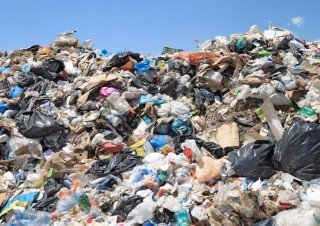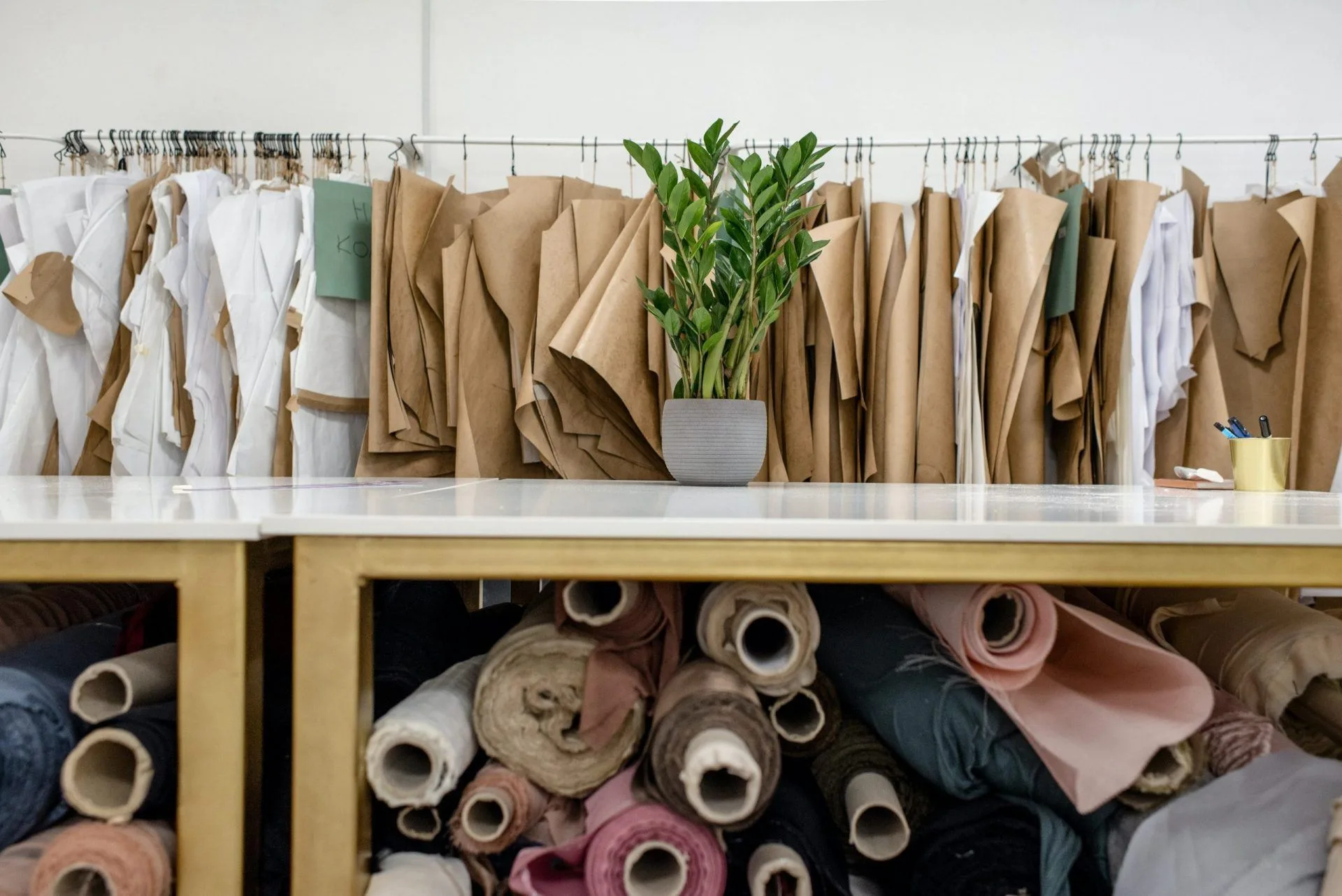Making sustainable choices in fashion can be hard. Even if you believe a healthy planet means healthy people. When it comes to fabrics, we often think very little before we make our choice. Most of us, myself included, will venture into shops like H&M and Zara and think more about how something looks than what its creation might have meant for the planet. Often, even when we’re trying our best, we’re getting it wrong. You might choose to opt for a natural fiber such as cotton or wool instead of a synthetic one. Unfortunately, that isn’t always the right choice.
In fact, making the ‘right’ choice is so complicated that many of us simply go with what we know rather than taking a step into the unknown. I think that this is most likely down to fear, we don’t know what we should do. And what we previously thought was right, isn’t. We’re confused and that confusion is so easily turned to fear. Humans aren’t great at change at the best of times in any case. In this article, I’ll hopefully be able to put your mind at ease
Why is fashion so vital for sustainability and combatting climate change?
Fashion is the second-largest polluter in the entire world. This is hugely problematic both because many of us love the industry dearly and of course,  the more obvious fact is that we all need to get dressed on a daily basis. Fashion really does make the world go round and I’m certainly not talking about trendy crop tops from your nearest high street retailer. Nope, I’m talking about the fact that clothing, fashion, is something which connects us all. We can tell so much about a person purely from taking a glance at what they’re wearing.
the more obvious fact is that we all need to get dressed on a daily basis. Fashion really does make the world go round and I’m certainly not talking about trendy crop tops from your nearest high street retailer. Nope, I’m talking about the fact that clothing, fashion, is something which connects us all. We can tell so much about a person purely from taking a glance at what they’re wearing.
Many cultures and religions have specific outfits and garments that are associated with them. Fashion is the way we tell the world who we are without having to say a word. As it is, humans are naturally resistant to change. This is only made more difficult by something as powerful and ingrained in society as fashion is. We are being asked to make a lot of changes and all at once. Unfortunately, these are not small changes and neither are they optional. An industry that we all love so dearly and use as a means of telling other people around us who we are is killing the planet.
Natural fibers or not?
There are both positives and negatives when it comes to natural fibers. Natural fibers include any fiber which comes from nature. This includes fibers like cotton, hemp, wool, mohair, and silk. One of the major positives when it comes to choosing natural fibers is their ability to be broken down easily. Natural fibers are biodegradable which simply means that they can be degraded easily by living organisms. Thus, natural fibers don’t hang around for long and so they don’t cause pollution or hang about in landfills for long. However, having said that, natural fibers in garments actually don’t break down as easily as one might expect. The issue here is that the fabric is heavily processed before it becomes a garment. In fact, a BBC documentary showed that clothing made out of natural fibers from the 80s is still fully intact.

Photo by Vie Studio from Pexels
So, it’s not just about the fabric, it’s also about the processing. Another issue, natural fibers aren’t always ethical. Many vegans make a point of staying away from animal fabrics like wool and silk because of the cruel aspect. Another issue is the amount of space and resources that are used in the production of fibers like cotton. Unfortunately, though extremely comfortable to wear, cotton is extremely heavy when it comes to water usage, making it unsustainable and ultimately not the best choice for the planet. If you do want to choose natural fibers, it’s best to choose organic. They generally use less water, don’t use pesticides, and are ultimately less harmful to the environment.
The good type of synthetic fibers
Thankfully, there is a new wave of sustainable fabrics. Arguably the most impressive of the lot is Econyl. This basically stands for Eco Nylon. It’s created using recycled plastic bottles and recycled nylon. Just using Econyl instead of creating new nylon prevents excess waste from going into the environment. The best news, Econyl is so strong and durable that it can be remolded multiple times without reducing its efficacy. It’s also not just for clothing but can also be used for interiors. Another option is to go with plant-based synthetic fibers. Examples of this include Rayon which is essentially semi-synthetic and is made using reconstituted wood pulp but still requires chemicals in the production process.
The innovators of the fashion world: Stella McCartney
Stella McCartney recently found herself in the news for all the best reasons. Back in June, the G7 summit took place in Cornwall, England. What has this got to do with Stella McCartney you ask? Well, McCartney was one of the thought leaders who was hand-picked by HRH the Prince of Wales. If you’re wondering why HRH Prince Charles might choose to recruit a fashion designer (and of course daughter of rockstar Paul McCartney) Stella, there are ![fashion brands [longevity live]](https://longevitylive.com/wp-content/uploads/2018/07/stella-mccartney-r18-04-213x320.jpg) a multitude of reasons. One of the major reasons behind the choice was likely that McCartney herself is a well-known environmental activist. Her eponymous brand is well known for being well ahead of the curve when it comes to sustainability and eco-friendly practices.
a multitude of reasons. One of the major reasons behind the choice was likely that McCartney herself is a well-known environmental activist. Her eponymous brand is well known for being well ahead of the curve when it comes to sustainability and eco-friendly practices.
McCartney has always been a passionate activist against climate change. Of course, in a sense, owning a fashion brand may, at first glance at least, seem to go against that. However, McCartney’s brand is one that is well known for innovation. In her case, the major focus of the brand itself is on changing and improving the fashion industry in an eco-friendly, sustainable way. When speaking at the G7, McCartney made it clear that in order for us to move forward in a sustainable way, things need to change both drastically and quickly. McCartney posited suggestions such as better policing of the fashion industry. She made the point that currently at least, the rules are vague and few and far between, especially when it comes to sustainability.
Your favorite celebs have probably gone green
Many of us look to the celebs and influencers we love and trust when it comes to making difficult decisions. This is one of the major reasons that celebrities and influencers endorsing sustainable practices are so vital. For instance, repeating outfits (even on red carpets) has been normalized and that’s largely thanks to celebs like Tiffany Haddish who, according to Vogue, wore the Alexander McQueen gown she wore for the premiere of the film Girls Trip five times before retiring it. Other stars championing re-wearing outfits include Kim Kardashian, Victoria Beckham, The Duchess of Cambridge, Kate Middleton, Keira Knightly and Kirsten Dunst. Other famous faces like Emma Watson purposefully wear only sustainable brands on the red carpet. Alternatively, Watson wears vintage designs.
been normalized and that’s largely thanks to celebs like Tiffany Haddish who, according to Vogue, wore the Alexander McQueen gown she wore for the premiere of the film Girls Trip five times before retiring it. Other stars championing re-wearing outfits include Kim Kardashian, Victoria Beckham, The Duchess of Cambridge, Kate Middleton, Keira Knightly and Kirsten Dunst. Other famous faces like Emma Watson purposefully wear only sustainable brands on the red carpet. Alternatively, Watson wears vintage designs.

Photo by Artem Beliaikin from Pexels
To buy or not to buy, that is the question
We’ve all felt the inexplicable urge to buy that bargain that’s on sale. The price is absolutely unbeatable and it’s likely that this is a deal not to be repeated. However, when it comes to fast fashion, the most important thing we can do is to stop and think before we buy. Yes, it might be a good deal but do you actually need it?
If it’s something that you’ve been thinking about buying for a long time but was previously out of your price range, that’s a great reason to go ahead with the purchase. However, if you previously hadn’t wanted or needed the item (or a very similar item) you should likely let that bargain pass you by. I am a firm believer that this should really only be done for key pieces in your wardrobes such as timeless blazers and winter coats but that’s just me.
Fast fashion facts
Sometimes it helps to see percentages and numbers rather than long, complicated sentences. Many of these quick facts come courtesy of Good On You
- The fashion industry is the second-largest polluter in the world

Photo by Artem Beliaikin from Pexels
- Clothing production is the third-largest industry in the world (first and second respectively are automotive and technological).
- Around $500 billion worth of value is lost due to wastage in the industry
- According to Fashion Checker, a massive 93% of large brands aren’t paying garment production workers a living wage
- One in three women surveyed by the Guardian in 2019 considered something they had worn just once or twice to be old and unusable.
- The fashion industry alone is responsible for 8% of carbon emissions.
References
https://timetosew.uk/natural-fibres-are-they-as-good-as-you-think/
https://www.vogue.com/vogueworld/slideshow/celebrities-rewearing-red-carpet-fashion
https://craftsmanship.net/eco-fashions-animal-rights-delusion/
https://timetosew.uk/natural-fibres-are-they-as-good-as-you-think/
https://goodonyou.eco/fast-fashion-facts/
https://www.vogue.com/article/stella-mccartney-spring-2021-a-to-z-manifesto
https://www.vogue.com/article/stella-mccartney-g7-summit-fashion-sustainability




![women [longevity live]](https://longevitylive.com/wp-content/uploads/2020/01/photo-of-women-walking-down-the-street-1116984-100x100.jpg)










